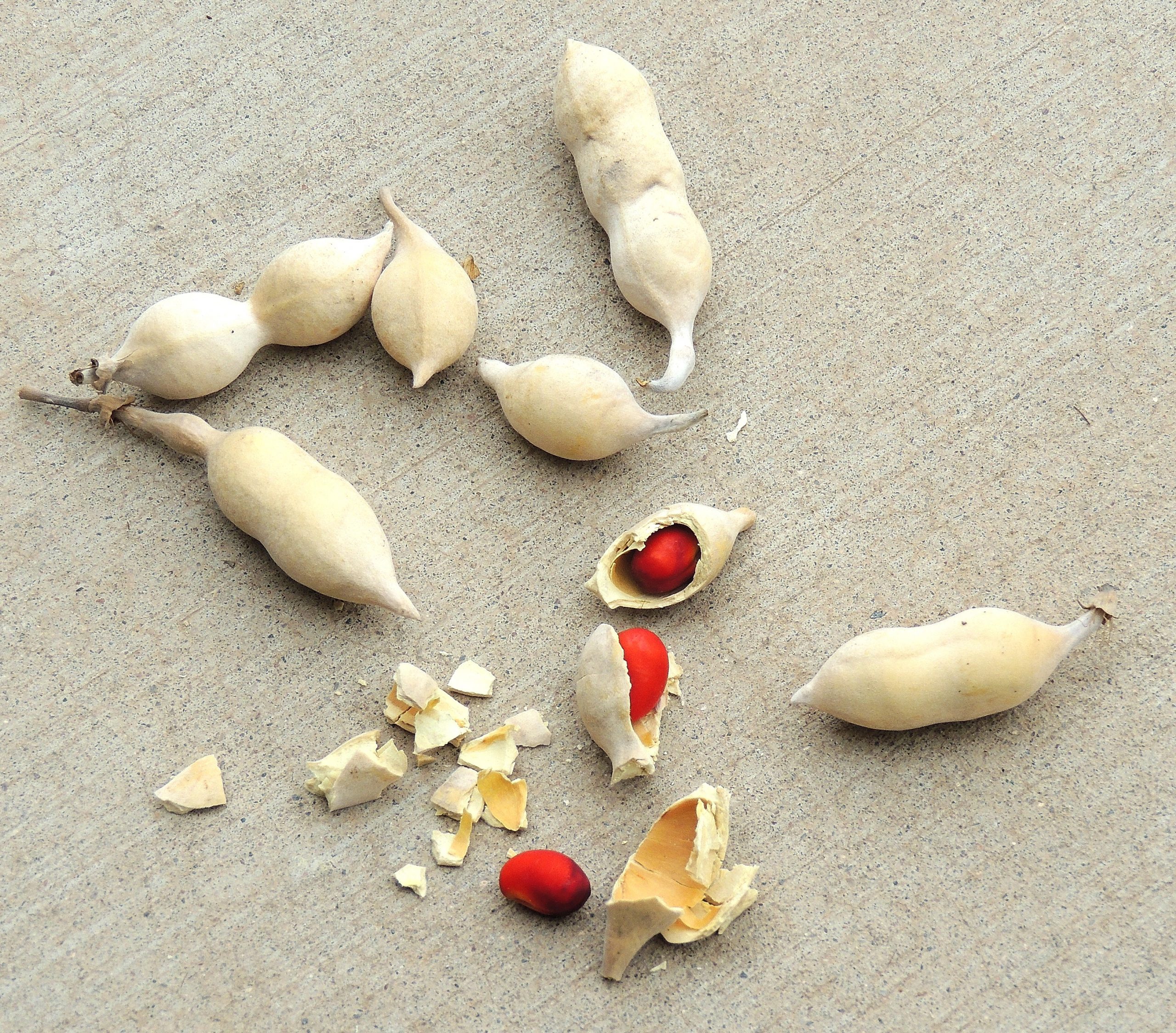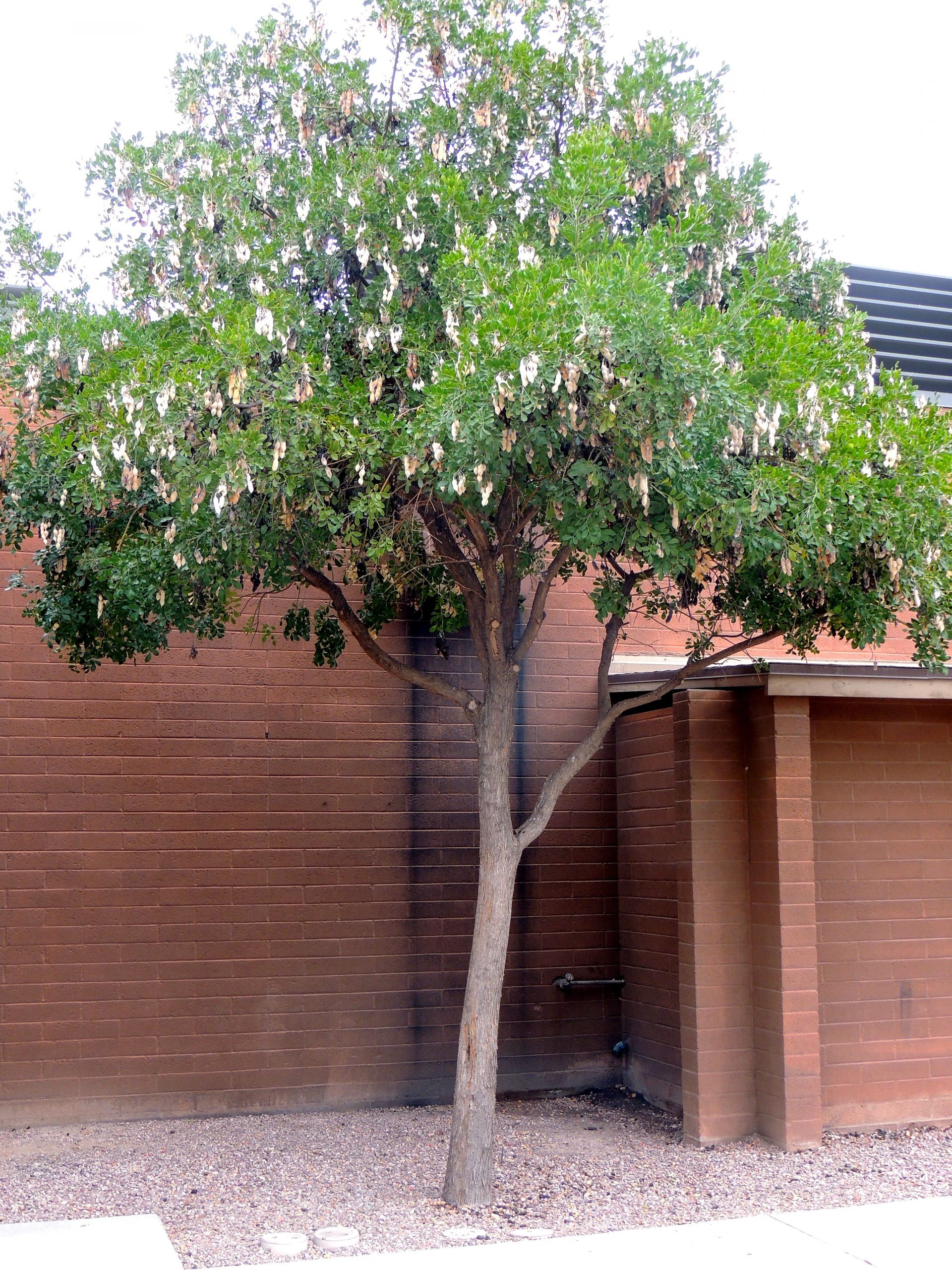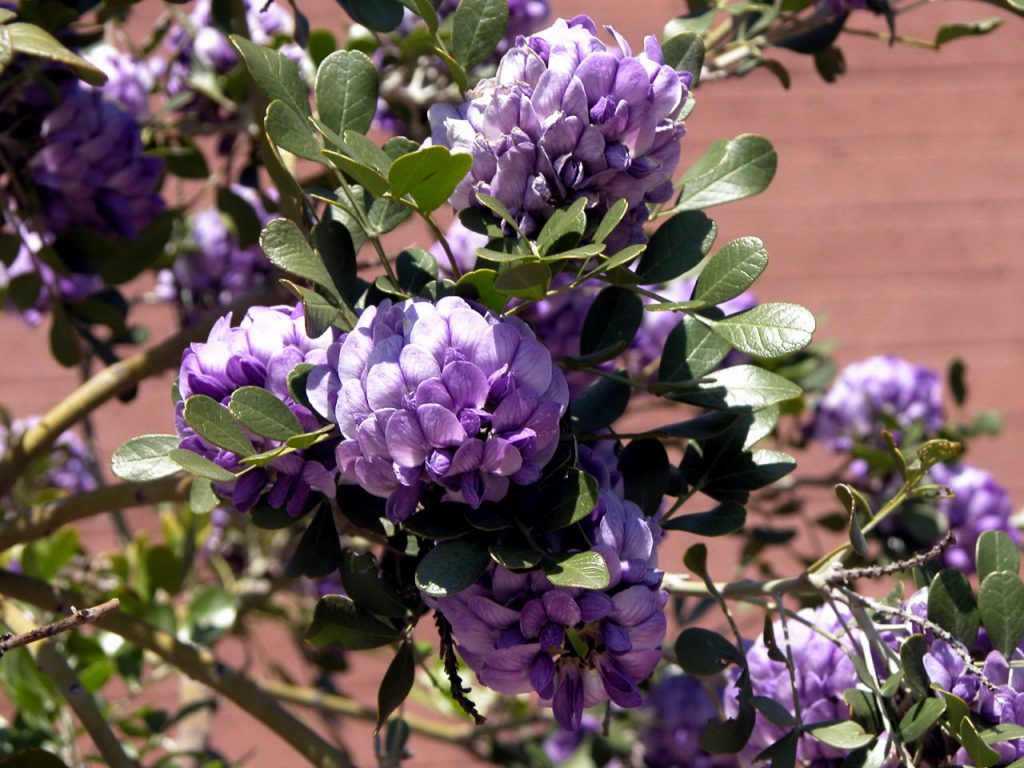
Texas Mountain Laurel
Note this plant was recently reclassified to Dermatophyllum secundiflorum, but is often still sold as Sophora secundiflora.
Description
This evergreen shrub grows slowly, in time becoming treelike with multiple trunks. A typical mature size is 15 feet high and 10 feet wide. Glossy dark leaves up to 5 inches long are divided into seven to nine 1-inch rounded leaflets. Large clusters of showy purple flowers hang heavy on the plant from February through March, filling the air with the fragrance of grape soda. A fine silvery fuzz covers the woody, swollen seed pods, which are 4 inches long and ¾ inch thick. The deep orange seeds inside are poisonous, although it is unlikely that the hard pods could be penetrated.
Native Distribution
Texas Mountain Laurel occurs in south-central and western Texas, New Mexico, and southward in Mexico to San Luis Potosí. It is typically found on slopes, between 1,000 and 5,000 feet in elevation.

Culture
Texas Mountain Laurel’s normally slow growth rate can be increased by thorough soaking several times a month in summer. However, if you’re the patient sort, irrigation can be discontinued after the first or second year of establishment. Texas Mountain Laurel is hardy to near 10 degrees Fahrenheit. It grows well in alkaline soil with good drainage. Choose a site in full sun. Larvae of Pyralid Moth can infest the plant, feeding on young growth and the immature seed pods. Bacillus thuringiensis, a biological control commonly used by vegetable gardeners, has proven effective on the caterpillars.
Texas Mountain Laurel’s naturally shrubby form can be trained into a tree by removing the lower branches. Clip the seedpods off before they mature if you have children or pets who might try to eat the poisonous seeds.
Landscape Use
Texas Mountain Laurel can be utilized as a small tree for tight spaces such as entry courtyards. The flowers are a very attractive feature, best appreciated at close range, where the fragrance is also most noticeable. Light-colored plants paired with Texas Mountain Laurel will accentuate its rich, deep green foliage. A magnificent informal hedge could be created by planting a row of Texas Mountain Laurel and letting the shrubs develop without shearing. The dense evergreen foliage could also be used to screen an unattractive view.
Did you know that up to 70 percent of water use is outdoors? That’s why we love desert plants and feature them each month. You can learn more about Texas Mountain Laurel and other plants on our Low-Water-Use Plants Page. Also, be sure to read through all of our featured Plant of the Month blogs!
From time to time, Water – Use It Wisely features guest bloggers who write about topics related to water and water conservation. Judy Mielke is a horticulturist, Landscape Architect and the author of one of Water – Use It Wisely’s favorite books. You can find plant descriptions like this and many more in her book Native Plants for Southwestern Landscapes.


